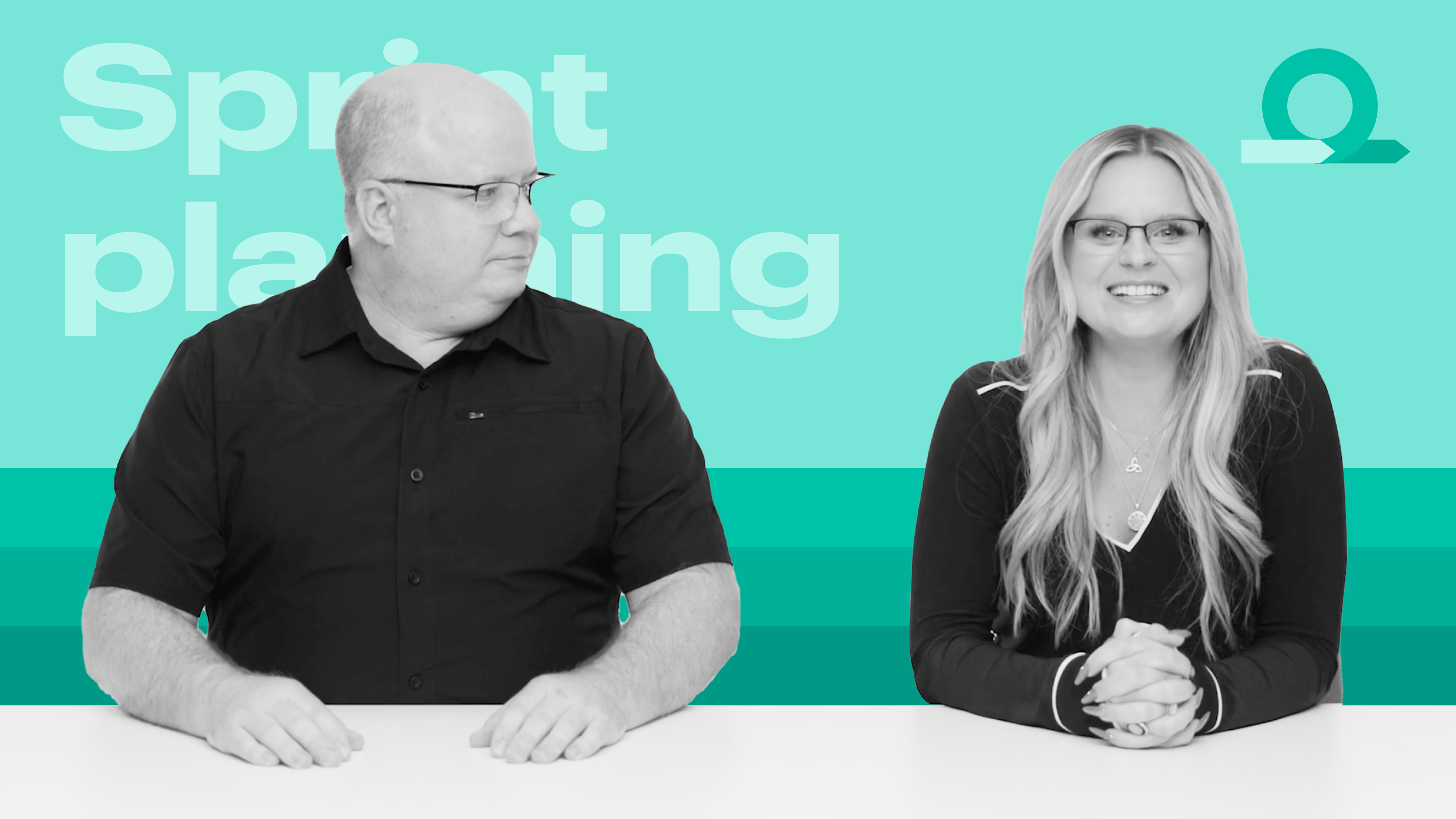All-access Agile
The comprehensive guide to big room planning
Back to agile hub
Learn more
1
Agile frameworks
2
Backlog management
3
Sprint planning
4
Daily standups
5
Sprint reviews
6
Sprint retrospectives
7
Big room planning

Table of contents:
The term “big room planning” may seem straightforward—team members enter a large room, and they plan—but it takes a lot of thoughtful preparation for this event to be successful, especially in hybrid or remote workplaces. However, once established, big room planning can become a key part of an organization’s culture.
Prior to big room planning, planning for releases was less transparent. Individual contributors focused on what was in front of them while program managers looked at the big picture, and often, teams’ results didn’t tie together.
With the move to big room planning, information is available to everyone involved in an upcoming release, leading to better collaboration and insights and improving engagement across teams.
In this guide, complete with videos from Agile experts Bryan Stallings and Jessica Guistolise, we cover what big room planning is, what the process looks like, how to make this event effective, and more.
What is big room planning?
Big room planning is a collaborative event where multiple teams contributing to a common outcome or release come together to plan and align their work for an upcoming period—typically a quarter or program increment.
By bringing together diverse perspectives, big room planning provides a holistic view of the work to be done, aligning efforts from the individual contributor level all the way up to executive leadership. This alignment and shared understanding lead to more effective execution and better business outcomes.
The purpose of big room planning is to:
- Align teams on shared goals and vision.
- Identify dependencies between teams.
- Create a high-level plan for the upcoming period.
- Foster communication and collaboration across teams.
- Build a shared understanding of risks and opportunities.
Big room planning is sometimes known by other terms, including PI planning (specific to SAFe), quarterly planning, release train planning, Agile release planning, and multi-team release planning. Release planning used to be a more popular term when releases were not as frequent.
Who attends big room planning?
All teams involved in the upcoming release should attend big room planning. More specifically, these roles should be in attendance:
- Developers
- Product owners
- Program managers
- Scrum masters
- Product leadership
- Senior executives or senior stakeholders
- Technical experts
- Customer experts
- Support teams
What is the Scrum master’s role in big room planning?
Scrum masters can be involved either with an individual team or a couple of teams. They plan the pre-work and help Scrum teams come fully prepared for the big room planning event.
During big room planning, Scrum masters work between the team and program level by facilitating, removing impediments, and gathering information.
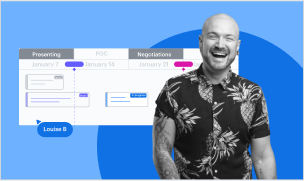
See for yourself how Lucid streamlines Agile workflows
What goes on a big room planning agenda?
A big room planning agenda can vary based on an organization’s need and the scale of the planning event, but a typical, in-person big room planning event usually spans one to two days and may include the following agenda items:
-
Pre-work (Starts many weeks in advance at the program level between program managers or, for SAFe, release train engineers)
- Decision-making at the program level, including roadmaps, themes, and epics
- Backlog planning across the program
- Backlog planning with each team
- Event communications
-
Day 1
- Connection before content
- Reviewing business context and vision
- Celebrating wins from the previous increment
- Introducing program objectives and roadmap
- Architecture overview and technical guidance
- Team breakouts for initial planning
- Draft plan review with other teams
- Identifying risks and dependencies
Note: Celebrating wins could involve stakeholders coming in and talking about the impact of the work, thanking the teams, sharing quotes from customers, and more.
-
Day 2
- Draft plan review and adjustments
- Continued team planning and refinement
- Cross-team dependency resolution
- Final plan presentations: “Walk the walls”
- Risk review, mitigation planning, and communication plan
- Confidence vote and plan adjustments
- Retrospective and next steps

Keep in mind that for fully remote or hybrid teams, one to two days might be too much time on Zoom. If your team is doing virtual big room planning, you’ll still cover the same agenda items, but you might want to opt for four half-days.
What does the big room planning process look like?
Now that you know what goes on a big room planning agenda, let’s dive more specifically into what the event looks like.
Before the event
Well before the big room planning event starts, there’s a group effort to get ready.
- Scrum masters are planning pre-work, and product owners should be thinking about what the next phase of work will look like, getting input from stakeholders, and preparing a product roadmap.
- Developers are wrapping up current work, collaborating with the product owner to refine the product backlog, and considering potential technical challenges for upcoming features.
- Architects are reviewing the overall system design and preparing to discuss any necessary architectural changes.
- UX designers are synthesizing user feedback and preparing design concepts for upcoming features.
- Data analysts are preparing reports on key metrics and product performance to inform decision-making.
Once there’s alignment, some refinement comes in: Work should be broken down for teams to know what they will focus on during the big room planning event. During this phase, the teams should also start estimating how much work is involved on their end and ask the initial questions they need answered.
Meanwhile, executives are reviewing business goals and priorities to ensure they're clearly communicated during the event.
First day of the event
Setup
The first morning of the big room planning event is the time for the facilitator to make sure the room is set up. For a remote big room planning event, the facilitator will want to set up the virtual space even sooner.
A virtual whiteboard like Lucidspark makes it easy to get your space prepared in advance. You can easily add an agenda, timelines, icebreaker activities, and more to a shared canvas, accessible to the entire group for program-level planning. With features like breakout boards, you can also set up spaces for team-level planning. Share the Lucidspark board ahead of time and in the meeting calendar invite to make sure participants are able to contribute.
Set up your next event with our free big room planning template (click to try template).
For in-person events, setting up includes ensuring everyone is technically set up to participate, tape is on the wall, breakfast or snacks are available, music is playing, and more.
Welcome
Kick off the event with a brief welcome. It can be good to pull in a leader that the teams don’t always hear from to offer encouragement. They may talk about the impact the teams’ work is already having and why the next phase of work is important.
Look to the future
Next is sharing the vision, mission, and roadmap for the next quarter. You can also bring in stakeholders to talk about how amazing the next phase of work is and hype teams up.
Architectural overview
As a last step before breaking off into teams to start planning, bring in anyone who needs to share technical information. This gives teams the opportunity to ask questions and take notes.
Keep in mind that you don’t want the start of the meeting (the welcome, vision, and architectural review) to take too long. Keep the opening succinct so teams don’t lose momentum for collaboration.
Break off into teams
Teams break off to plan their part of the backlog and put it into different sprints throughout the rest of the day. During this portion of big room planning, teams will talk to other teams about dependencies, take notes on mitigating risks, and pull in decision-makers as needed.
Scrum masters, product owners, and stakeholders are also there to provide assistance, along with others whose work the teams may be dependent on.
Converge and diverge
Lots of converging and diverging takes place throughout big room planning. Teams will diverge for a period of time to discuss their plans, and then the entire group will converge back together to align on the next goal.
During this process, the Scrum masters help with bottlenecks, provide crisis management, bring in subject matter experts, and help everyone to end on time. Scrum masters might have a Scrum of Scrums to check in on a regular basis to see how everyone’s feeling and identify anything they can mitigate together.
Product owners may similarly check in with each other to ensure that different pieces of the work have been discussed as the plan starts to take shape.
End on time
It’s important to end the planning session on time because big room planning takes a long time and makes people tired, and tired people don’t plan well.
“Walk the walls”
Typically, a group stays behind (including someone who has the authority to make higher-level decisions) to “walk the walls.” For in-person big room planning, this means physically walking around to each team’s space, reviewing how the plan is shaping up, and identifying gaps and risks. For example, has a significant compliance issue been overlooked? Is the team going to miss a commitment an executive made on an impactful sales call? With the projected timeline, is one team going to be weeks behind the other teams?
Being able to identify and mitigate these risks and misalignments is one of the main reasons to do big room planning in the first place. The point of “walking the walls” is to identify how to optimize the plan to deliver the best value possible realistically.
For remote big planning, “walking the walls” means reviewing the plans shared in the virtual whiteboard.
Second day
The next day, teams will come back together to look at everything with fresh eyes and check in on changes that were made after a group “walked the walls.” They continue to work on their plans and coordinate with other teams until it’s time to “walk the walls” again.
“Walk the walls” a second time
Once planning starts to wrap up, stakeholders come back to the event, and it’s time for teams to share their plans with the larger group and answer any final questions about their plans.
As mentioned previously, in person, this means the group walking to each team’s station so that team can present their plans. Virtually, each team can share their breakout board over Zoom and accept questions verbally or via chat.
Fist to five
After each team has had a chance to share their plans, the group will do a fist to five, a silent confidence vote in which each participant holds up the number of fingers that represent how confident they feel in the plan that’s been made or signals agreement in another way.
This activity helps everyone have a voice. Threes, fours, and fives are good enough to move forward, but ones and twos have to be addressed to ensure the group isn’t missing something important. The fist to five vote helps teams identify any lingering issues that need resolution before a plan is finalized. It’s a crucial step to achieve shared understanding and commitment to the upcoming work.
Click to use template for fist to five big room planning
Closing the meeting
The last part of big room planning is closing the event with a retrospective and discussing action items. The group will address questions along the lines of the following:
- How did our event go?
- What went well?
- What do we want to do next time?
Once action items have been clarified, the group can disperse.
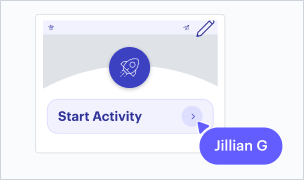
See for yourself how Lucid streamlines Agile workflows
How often is a big room planning meeting held?
The timing of big room planning is crucial as it sets the rhythm for the entire organization's planning and delivery cycle. It's designed to provide a regular touchpoint for aligning teams and adjusting plans based on current business needs and market conditions.
Many organizations hold big room planning quarterly, but some prefer to hold it bimonthly or biannually. The key is consistency.
What makes big room planning more effective?
According to experienced Agile coaches Bryan Stallings and Jessica Guistolise, three actions can make big room planning more effective for both facilitators and participants:
- Being prepared
- Using visual collaboration software
- Having decision-makers present
Being prepared
Both facilitators and participants coming prepared for big room planning is the most critical part of having the event—you can’t hold the event if the preparation isn’t done. Even one participant not being prepared can introduce a lot of risk and doubt into planning.
To prepare, program-level facilitators have to plan six to eight weeks in advance. Additionally, the group may do a half-day simulation of what big room planning will be like so that the actual event will be more successful later, and facilitators will provide a list to teams of what to have ready for the event.
Using visual collaboration software
As discussed earlier, visual collaboration software—including virtual whiteboards like Lucidspark—is essential to remote big room planning. But it’s also just as helpful for in-person planning as well!
Not only does Lucidspark allow you to set up breakout boards for individual teams, but it also:
- Saves you time by pulling data from Jira and visualizing that data
- Allows everyone to see the board, which is not always possible in person at a crowded event
- Gives more team members a voice through features like voting, sticky notes, Visual Activities, and more

Import Jira issues as Lucid Cards into Lucidspark
If you’re holding your event virtually, you can integrate Lucidspark with video conferencing apps such as Zoom or Webex to make your big room planning meeting more engaging.
In person, you can have participants join your Lucidspark board via laptops for part of the event, or you can integrate Lucidspark with interactive whiteboards like Zoom Rooms or Google Board 65 and Desk 27.
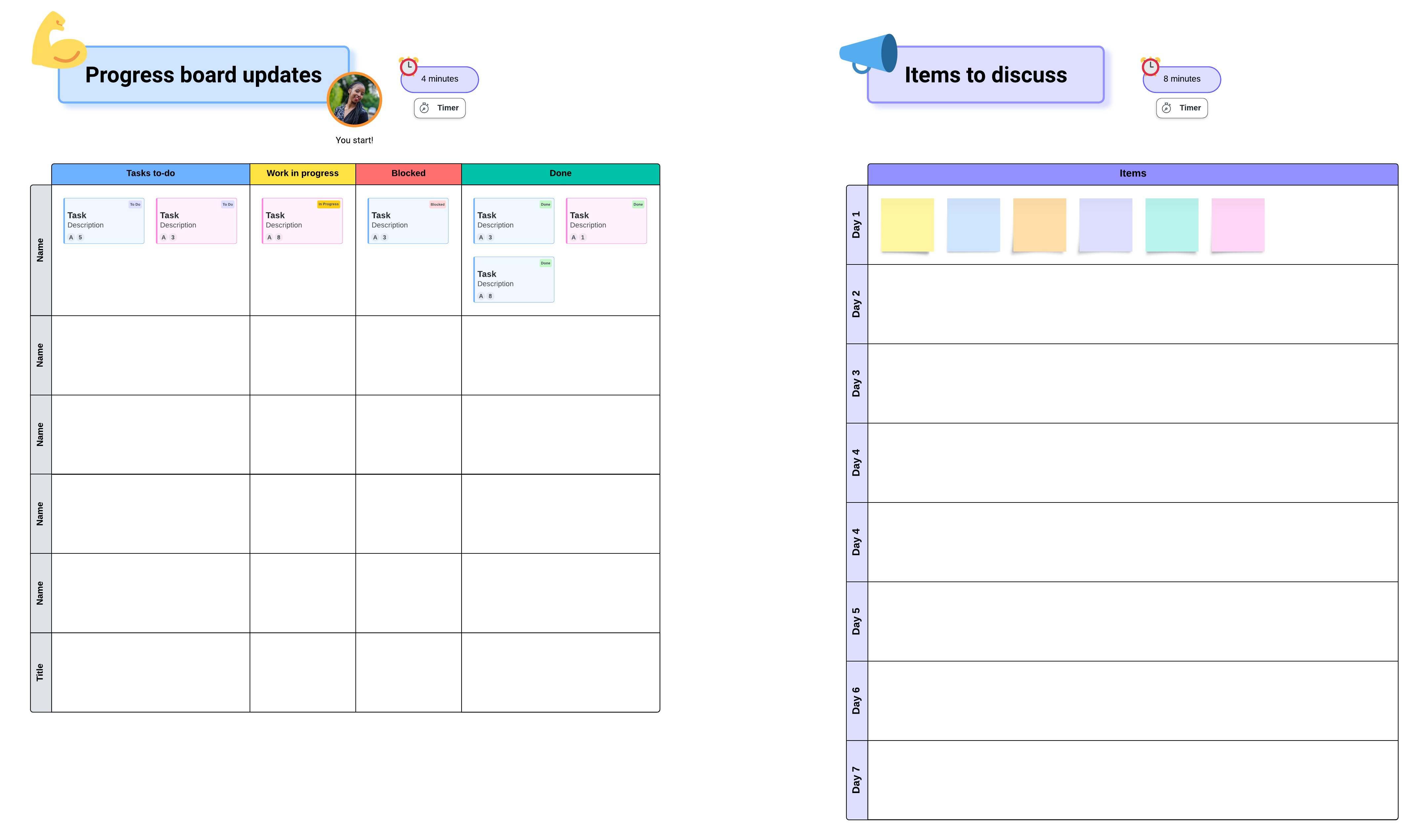
Learn more about how to use Lucidspark for big room planning
Having decision-makers present
When risks are identified, teams will have to make tradeoffs, and they’ll need decision-makers present to make the call and keep the planning session moving forward. If you don’t have decision-makers present for at least the “walking the walls” portion of big room planning, you’ll halt progress on your plan, and big room planning will be less effective.
Lucid for Agile
Lucid is not only great for big room planning—it can also enhance your other Agile events! With flexible features and an infinite canvas, Lucid can help engage your Agile teams and ensure every team member has a chance to be heard.
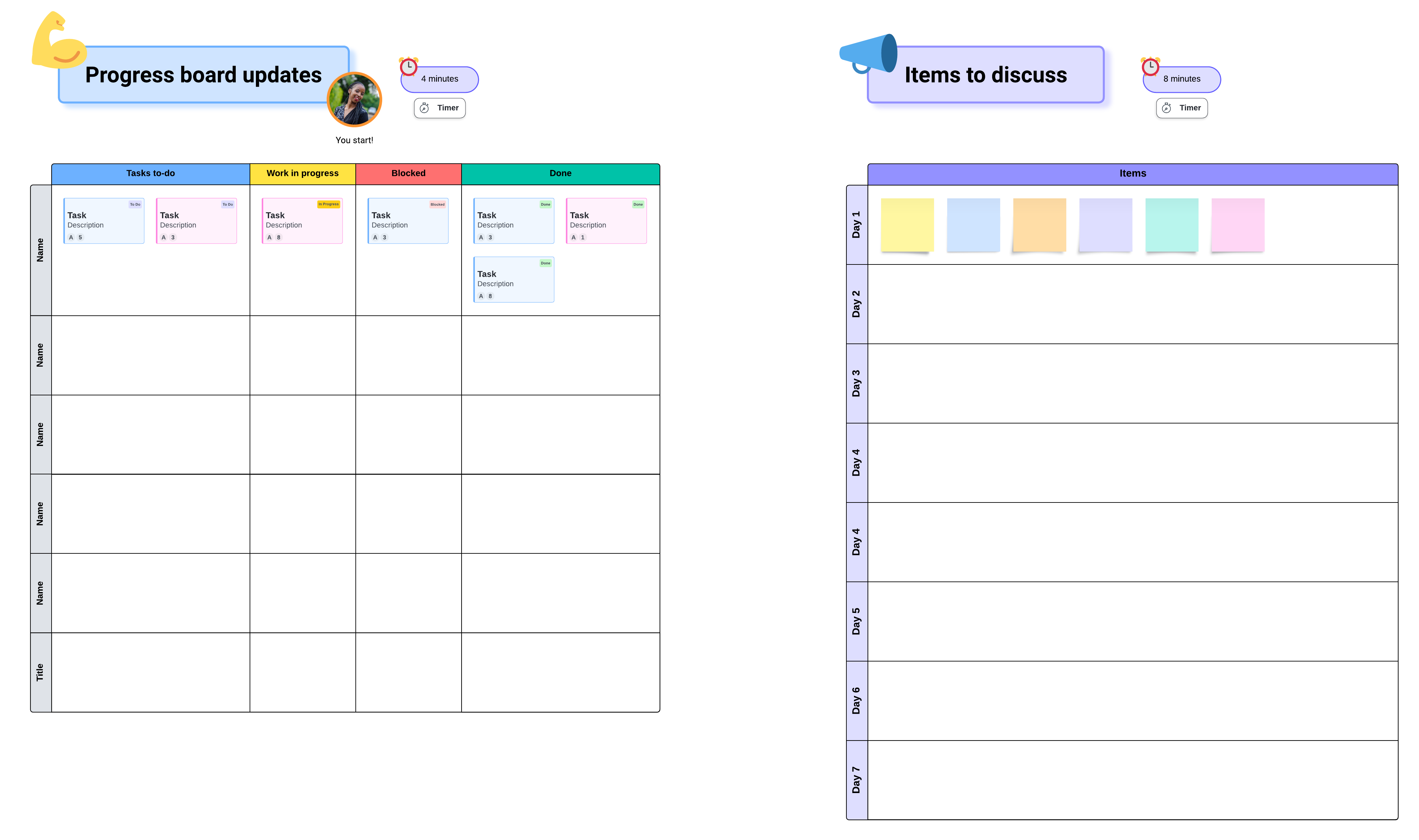
Bring your Agile teams together to connect and collaborate with the Lucid Visual Collaboration Suite
